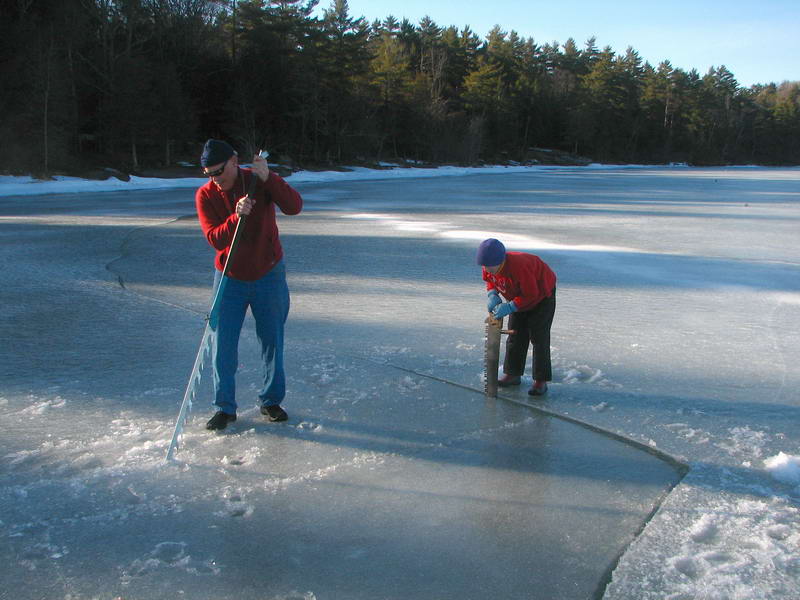Turning the Bend
 Wednesday, February 27, 2013 at 07:40PM
Wednesday, February 27, 2013 at 07:40PM  Cutting a large hole in Shelburne Bay to experience falling in and getting back on the ice. March 9, 2010.
Cutting a large hole in Shelburne Bay to experience falling in and getting back on the ice. March 9, 2010.
As February finishes, the days are getting longer quickly and the sun is getting higher in the sky. This increases average air temperatures and inhibits the thickening of ice sheets. The end of season thaw takes place in two to four weeks rather than the 2-3 months it took to get to maximum thickness.
The obvious explanation is the greater strength of the sun. Late December days in Burlington (44.5 deg N Latitude) are 8 hours long. The will be 12 hours by mid-March. The sun angle has a bigger effect: there is about twice as much energy delivered to horizontal surfaces in March as December (not including the considerable effect of more clouds in December). The combined effect of angle and duration of sunlight is that about three times more energy is available on a sunny March day than in December.
Getting a feel for the bearing strength limits of 5" thick, well thawed small grained (S2) ice. A dry suit can be a wonderful thing. March 12, 2012 Photo:. Al Russell
Traditionally, early March has been a great time to get in a little end of season ice time: warm days and a foot or more of ice in most of the bays on Lake Champlain. For two of the last three years, we have had the season end in early March. This year is coming into March with ice about half as thick as usual so we expect it to go fast when the weather turns a little warmer and sunnier.
Click here for the recently updated End of Season page. It gives an overview of considerations for late season ice.
Bob
 robertdill | Comments Off |
robertdill | Comments Off | 
